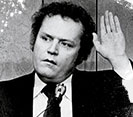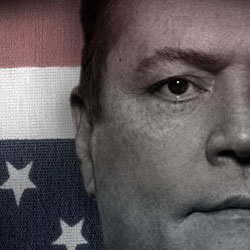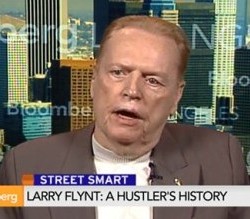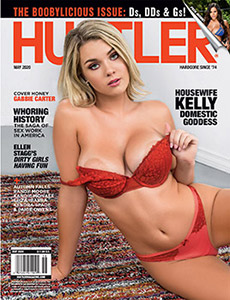Equal-Opportunity Poverty
DOWNSIZING THE MIDDLE CLASS IS A RISKY BUSINESS.
by Robert Scheer for HUSTLER Magazine
Poverty is not just for the poor anymore. Ever greater numbers among the 99% being screwed by the top 1%, who control more than 40% of the wealth in this country, should stop pretending to be middle-class and admit that they are on the deep, losing end of America’s fierce class struggle.
We used to think poverty was just for urban ghetto folk who looked, talked and acted differently than the rest of us. No more. Poverty has been democratized, and the poor are everywhere. “Funny, you don’t look poor” is what you might say to your neighbor in that white suburb who is surviving on food stamps and skipping mortgage payments until eviction. But when it comes to poverty, America is now an equal-opportunity society. Sure, folks don’t go around in rags and visibly malnourished.
Thanks to Walmart’s steady supply of Chinese sweatshop-produced clothes and our own government’s vastly expanded food stamp program, poverty is disguised.
In the past ten years, poverty in suburban America has jumped an astounding 53%, twice its rise in urban centers. For the first time in U.S. history, poverty in the suburbs exceeds that of the cities they surround. While the superrich scurry for safety in their fortress enclaves, suburbs across the country feature boarded-up houses with mortgages that are deeply underwater.
Six months before the appearance of an Occupy Wall Street encampment, Joseph E. Stieglitz wrote an article for Vanity Fair— titled “Of the 1%, by the 1%, for the 1%”— that provided the movement with its essential manifesto. In a prescient prediction of the protests to come, the Nobel Prize-winning economist issued a warning to the power elite that tends to read Vanity Fair : “Americans have been watching protests against repressive regimes that concentrate massive wealth in the hands of an elite few. Yet in our own democracy, 1% of the people take nearly a quarter of the nation’s income—an inequality even the wealthy will come to regret.”
What they will regret, if they retain a shred of caution born of common sense, is that despite an economic meltdown caused by bankers run wild and requiring massive taxpayer-financed government intervention to avoid another Great Depression, the financial overlords continued to pay themselves enormous bonuses while ordinary folk went bankrupt. Hiding behind the fig leaf of Adam Smith’s freemarket capitalism, they invented gimmicks never before known in the financial world that destroyed the real estate market and turned peoples homes into gambling chips in the Wall Street casino.
Thanks to the Republicans in Congress back in the 1990s and Democratic President Bill Clinton, who became their water boy, the rules of the regulatory road were changed. Swindles called collateralized debt obligations and credit default swaps—transactions that would have been judged patently illegal if the Mafia had invented them—were made legal as a matter of federal law. The result was a boom-and-bust cycle that vastly increased the gap between America’s superwealthy and the rest of the nation. In the process, the bedrock of the American Dream—an ever better-off middle class— was demolished.
Even during the Clinton years, which many Americans now think of as good times, the class divide in America was growing with a vengeance. As I document in my book The Great American Stickup, the income of the top 1% increased 10.1% per year under Clinton, while it rose only 2.4% for the other 99% of the population. Things got worse under George W. Bush. Even before the banking meltdown of 2007, the top 1% enjoyed an 11% annual rise in income, while the rest received the crumbs—sharing in a 1% increase. With the imminent collapse of their Ponzi scheme, the bankers were saved. In the meantime, their victims were thrown under the bus.
As libertarian Ron Paul, the Republicans’ only honest Presidential candidate, put it: “The bailouts came from both parties. Guess who they bailed out? The big corporations, the people who were ripping off the people in the derivatives market.… But who got stuck? The middle class got stuck…they lost their jobs, and they lost their houses. If you had money to give out, you should have given it to the people who were losing their homes, not to the banks.”
In his Vanity Fair article, Stieglitz hit the nail on the head: “The top 1% have the best houses, the best educations, the best doctors, and the best lifestyles, but there is one thing that money doesn’t seem to have bought: an understanding that their fate is bound up with how the other 99% live. Throughout history, this is something that the top 1% eventually do learn. Too late.”
———————————
Before serving almost 30 years as a Los Angeles Times columnist and editor, Robert Scheer spent the late 1960s as Vietnam correspondent, managing editor and editor in chief of Ramparts magazine. Now editor of TruthDig.com, Scheer has written such hardhitting books as The Pornography of Power: How Defense Hawks Hijacked 9/11 and Weakened America and his latest, The Great American Stick-Up: Greedy Bankers and the Politicians Who Love Them.

















